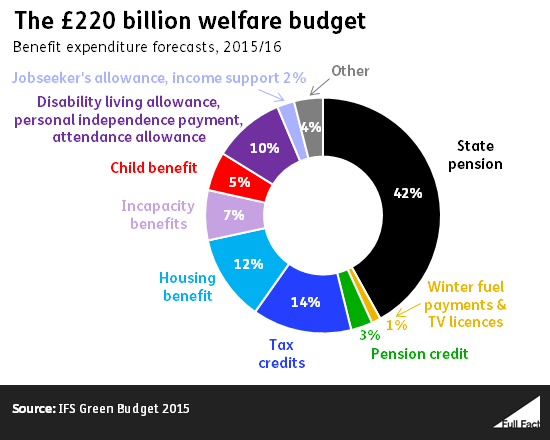When talking about benefit cuts it's unhelpful to refer to the "£220 billion" welfare budget
"This government was elected with a mandate to implement further savings from the £220bn welfare budget. For a start, we will reduce the benefit cap and have made clear that we believe we need to make significant savings from other working-age benefits." George Osborne MP and Iain Duncan Smith MP writing in The Times, 21 June 2015.
The mandate to which Mr Osborne and Mr Duncan Smith refer to here is their manifesto commitment to cut spending on welfare:
"We will find £12 billion from welfare savings, on top of the £21 billion of savings delivered in this Parliament".
But the £220 billion figure they give includes expenditure on state pensions and universal pensioner benefits too—something the Conservatives have committed to increase (in the manifesto and in the Times article). State pensions will increase via the triple lock, while pensioner benefits will be protected.
Excluding the state pensions and pensioner benefits, the remaining welfare budget—where the savings will come from—amounts to £125 billion. That's about three-fifths of the total £220 billion budget.
Join 72,953 people who trust us to check the facts
Sign up to get weekly updates on politics, immigration, health and more.
Subscribe to weekly email newsletters from Full Fact for updates on politics, immigration, health and more. Our fact checks are free to read but not to produce, so you will also get occasional emails about fundraising and other ways you can help. You can unsubscribe at any time. For more information about how we use your data see our Privacy Policy.
Under the Coalition government the use of the term 'welfare' and the corresponding budget was applied inconsistently, sometimes including some pensioner-related expenditure and sometimes not.
It is unhelpful to present the £12 billion worth of cuts in relation to the full £220 billion welfare budget, when £95 billion of it—relating to spending on pensioners—is immune from those cuts.
